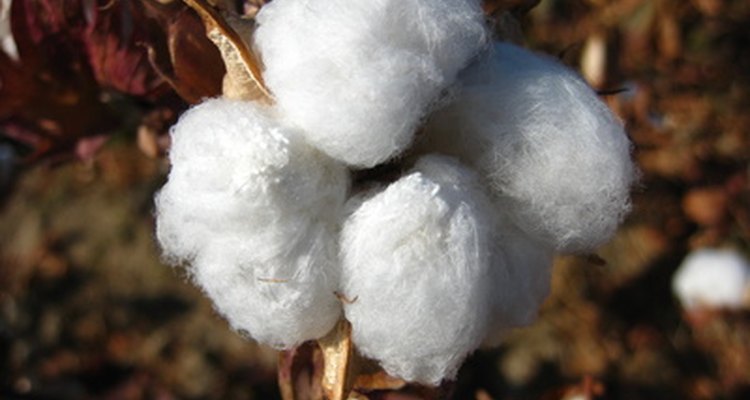
No one knows for sure where cotton plants were first cultivated—scientists have found ancient cotton cloth in Mexico, Pakistan and Egypt. Until the Industrial Revolution, cotton was picked, processed and woven by hand. With the invention of the cotton gin in the late 18th century, cotton fiber production multiplied more than fifty times in the first ten years. Today, cotton generates more than $120 billion in total revenue for United States businesses.
Forming Yarn
Picked cotton must be turned into yarn before it can be woven into fabric. The cotton fibers, called lint, are sent to a textile mill’s carding machine, which rearranges fibers into a web-like arrangement. This web is funneled into a single strand of fiber and blended with several other strands for strength. Called a “sliver,” this new rope of fiber is spun to make it smaller and tighter, forming yarn.
Weaving
Cotton yarns are placed vertically on a mechanical weaving loom. The machine weaves horizontal rows of yarn across the vertical yarns, creating woven fabric. Different types of cotton fabric require different weaves; most use a basic over-and-under weave structure. Sturdier fabrics like denim use a tighter weave. Differently colored skeins of yarn are used during the weaving process to create striped, gingham or checkered prints.
Knitting
Cotton yarns can also be knit into fabric instead of woven. Machines create long rows of yarn loops knit together with perpendicular rows of more loops. The end result is similar to that of weaving—vertical and horizontal lines of loops are connected, forming a flat surface of fabric.
Smoothing
Once the fabric is woven or knitted, it is passed through an industrial version of an iron—metal plates that smooth wrinkles, disperse threads and remove lint. The fabric needs to be flat and smooth to absorb the dye or chemical treatment that follows. Once it’s flat, the fabric is pre-treated with hydrogen peroxide to remove any natural color and make the dyeing process easier.
Dyeing and Printing
The smoothed fabric is dipped into a vat of single-color dye and squeezed through padded rollers. If the fabric is scheduled to have a print, it then passes beneath a roller that’s engraved with the print and implanted with dye. On such a roller, up to ten colors can be printed at once. Once all color has been imparted, the fabric is then sent to an oven where the heat will sear the dye into place.
Finishing
Special finishes can be applied to make the fabric water-resistant, shrink-resistant or flame-retardant. Some finishes are for appearance only, making the fabric matte or glossy. Machines apply the finishes with sprayers, brushes and rollers. Once any desired finishes have dried, the fabric is ready to be shipped to the user. Approximately 57 percent of cotton fabric is used for clothing, with the remainder being used for home furnishings and industrial products such as tarps, book binding, zipper tape and medical supplies.
Related Articles
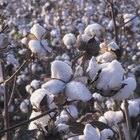
How Is Cotton Made?

Definition of Polyester Staple Fiber

How Is Wool Turned Into Fabric?
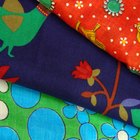
What Is Arnel Vintage Material Fabric?

How to Dye Polyester Fabric

Properties of Cotton Fabric

Information About Cotton Fabric
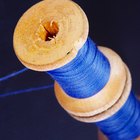
What Is a Synthetic Polyester Fabric?
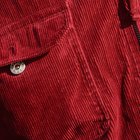
What Is the Difference Between Denim & ...
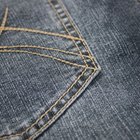
How to Shrink Cotton

Types of Cotton Fabric

How to Remove Silk Screening From ...

How Clothes Are Made From Cotton

How to Iron Cotton Clothing

How to Remove Wrinkles From Polyester ...

How to Dye Pantyhose

How Is Poly Cotton Made?
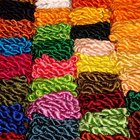
How Is Silk Made Into Fabric?

How to Take Care of 100% Cotton ...

How to Remove Blue Jean Dye Stains from ...
References
Writer Bio
Jenni Wiltz's fiction has been published in "The Portland Review," "Sacramento News & Review" and "The Copperfield Review." She has a bachelor's degree in English and history from the University of California, Davis and is working on a master's degree in English at Sacramento State. She has worked as a grant coordinator, senior editor and advertising copywriter and has been a professional writer since 2003.
Photo Credits
Cotton plant -3 image by Alexey Burtsev from Fotolia.com